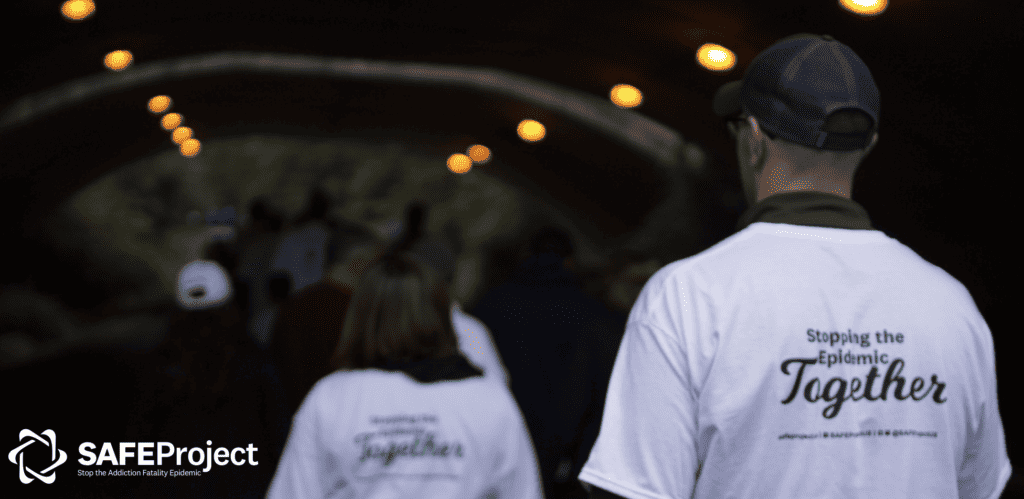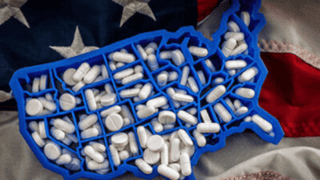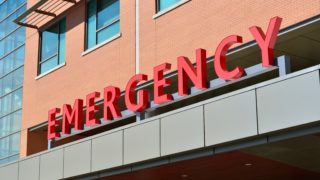Addiction is a disease, not a moral failing.
The stigma associated with substance use disorder is a major impediment to implementing solutions needed to prevent it and its impacts. Addiction, similar to medical diseases like diabetes, heart disease, and cancer, has many determinants, including lifestyle and health choices — but blaming individuals is incorrect and detrimental to healing and overall wellness.
There are no simple solutions to the addiction epidemic.
Making progress requires tightly interrelated strategies and actions in awareness, prevention, prescription medicine, law enforcement, criminal justice, medical response, treatment, recovery, and support for families.
The addiction epidemic is best solved community by community, neighbor to neighbor.
While federal and state partners are critical to our collective response, this epidemic will only be resolved at the local level with engaged, informed communities. We partner with communities to promote well-being, healing, and connection. Although our challenge is a common one, each community is different. For this reason, a successful, sustainable response must be centered within each community, led in collaboration across sectors, and include those who have been directly and indirectly impacted by substance use.
“Just Say No” messaging is ineffective.
Not only is “Just Say No” messaging ineffective, it relies heavily on a punitive approach rather than rehabilitative and empowering education. Historically, the United States has used a penal approach, leading to the disproportionate mass incarceration of people who use drugs, specifically Black and Indigenous people. Scare tactics must not be used to shame people into not using drugs. Instead, education that fosters resilience, life skills development, and a strengths-based approach that leads to healthy choices throughout the lifetime must be provided.
Just as there are risk factors that can influence substance use disorder, there are positive factors that can influence recovery.
Risk factors for substance use disorder can include genetic history, mental health challenges, trauma, Adverse Childhood Experiences (ACES), peer/sociocultural/environmental influences, family dynamics, and a lack of connection. Positive influences in recovery can include overall wellness, a safe and stable place to live, a sense of purpose, strong relationships and connections with others, support, and resilience.
We need significantly more insurance plans and medical providers who support the treatment of substance use disorder.
As a disease, addiction should be treated alongside other health concerns. The medical community should support all efforts to increase patient access to high-quality substance use disorder prevention, treatment, and recovery services. Furthermore, education surrounding culturally-responsive substance use disorder care must be increased. Insurance plans must ensure services are covered with a focus on equity, parity, and accessibility.
Treatment and recovery for addiction is effective and can take many forms.
Whether it is faith-based counseling, harm reduction, self-help meetings, or inpatient treatment, support must be based on what works best for the person seeking services, not what others think or say. Access to quality care and wellness resources plays a critical role in both addiction and recovery.
We must improve accessibility and parity in healthcare to improve treatment, recovery, and overdose prevention.
Treatment and recovery resources have been unequally distributed throughout history, and have led to marginalized groups being excluded from access to care. Since 2019, the overdose death rate for Black and Indigenous Americans has increased at twice the rate of their white peers, yet studies show buprenorphine treatment is concentrated among white persons and those with private insurance or who use self-pay. To meaningfully improve outcomes, the inequity in our systems and the normalization of deaths among communities of color must be addressed.
Medication Assisted Treatment/Medication Assisted Recovery (MAT/MAR) are evidenced-based solutions that combine behavioral therapy and medications to support long-term recovery.
Medication as a path of recovery is not “substituting one substance for another.” The medication element of MAT and MAR helps stabilize individuals, enabling more effective treatment and sustained recovery. Whether it is harm reduction, self-help meetings, outpatient or inpatient treatment, support must be based on what works best for the person seeking services.
There is a serious treatment gap for those with co-occurring substance use disorder and mental health challenges.
Research shows that more than half of individuals who experience a substance use disorder during their lifetime will experience a co-occurring mental health disorder. Both of these challenges must be equally addressed by treating the whole person. Attempting to treat one without considering the other reduces a person’s chances of achieving long-term recovery for either or both disorders.
Harm reduction saves lives.
Harm reduction refers to a collection of strategies that promote safer use. Harm reduction efforts center well-being and improved quality of life as the criteria for successful interventions. Meaningful harm reduction can take many forms. Overdose prevention centers (OPCs) are vital in the fight against overdose deaths and provide an avenue for participants to receive counseling and referrals for further healing. Naloxone is a safe and effective medication that can reverse an opioid overdose. These, and other harm reduction efforts such as safe syringe exchanges, fentanyl test strips, and safe drug disposal, are key tools in the fight to stop the addiction fatality epidemic.
Individuals in recovery deserve a person-centered approach.
People in recovery who are in any type of transition should receive a person-centered approach with robust follow-up support including accessible recovery support services and recovery housing.
Patients and doctors should partner to discuss pain management options and potential risks of medication. This should include a decision on what medications are right and include thoughtful limitations on prescription length and strength.
Insurance companies should pay for comprehensive pain management rather than relying solely on prescription medication to relieve symptoms. Robust, cross-state prescription drug monitoring programs are essential to limiting over-prescribing. Comprehensive prescription education programs benefit individual and community health, as well people managing pain.
Arresting people with substance use disorder will not eliminate the addiction epidemic.
Addiction is a disease and we cannot resolve it by arresting individuals struggling with it. Criminal policies are not only ineffective in preventing substance use, but have resulted in the mass incarceration of people who use drugs, especially Black and Indigenous people. We promote reinvesting resources into the communities most harmed by those efforts. Pre-arrest diversion, deflection, and/or drug courts are more effective for those with a substance use disorder.
Treatment and recovery support services should be made widely available throughout the criminal justice system (i.e.: initial detention, jail, prison, reentry, and community corrections) in the United States.
Treatment should include a comprehensive and holistic approach that is person centered. A wide variety of options, including counseling, medication assistance, and treatment must be available and equitably accessible for incarcerated citizens. Recovery support services should include access to a peer worker or a recovery coach within the jail or prison. Special care should be paid to people who leave the criminal justice system, since this transition is a particularly dangerous time for overdose and death.





